Chubb Lithographs of 18th. Century Bridgwater
On 4 November 2003, Dr Peter Cattermole of Friarn.co.uk bid successfully at Tamlyn & Son for a set of glass lantern slides of Old Bridgwater, Lot 193.
The slides were described as: “Formerly Belonging to J. H. Burge, Verger of St Mary’s Church, Bridgwater“. The small cardboard box in which the slides were contained supported the description in the catalogue. Inside the box was a loose label informing the purchaser that: “The Vendor’s Grandfather was Verger of St Mary’s Church Bridgwater“.
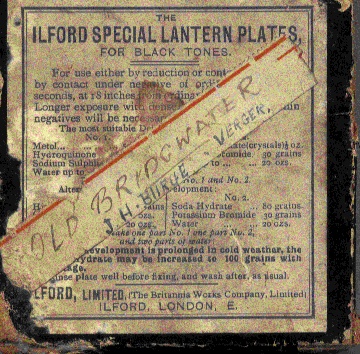
The slides were fine-grained photographs of seven of John Chubb’s lithographs of Old Bridgwater, and are reproduced below. High resolution 600dpi images (about ½MB each) may be downloaded by clicking on each small image below. If reproduced, please acknowledge this source.
The lantern slides capture some mid-nineteenth century lithographs, which are in turn based on some watercolours made by John Chubb (1746-1818) in the last decade of the eighteenth century and first of the nineteenth. It seems Chubb was especially fond of recording structures that would soon be demolished.
At the request (probably the patronage) of Colonel Tynte, MP for Bridgwater, the watercolours seem to have been converted by John Chubb’s son, also called John Chubb, and Charles Joseph Hullmandel into Lithographs. DAY’s Lithographic Press Company was employed to produce these, and later one of Bridgwater’s first photographers, Robert Gillo then reproduced these lithographs as photographs. These lantern slides were made by Ilford Limited of London. Due to the two layers of mediation, we should use these images with some caution as historical sources, as often the perspective, proportions and details might have been garbled during their composition. However, setting that aside, these are still fantastic records of the town’s lost heritage.
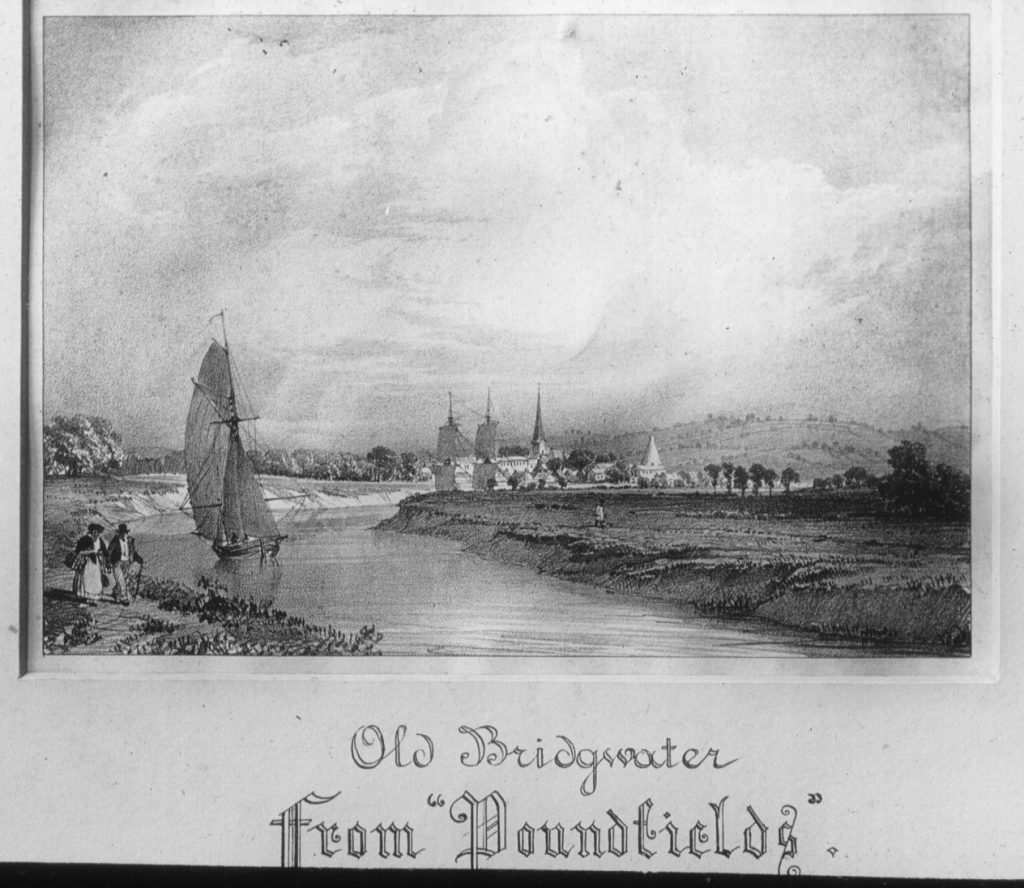
This picture was taken down river, at either Castle Field or Sydenham, the name ‘Poundfields’ being rather obscure. Of particular note here is the huge Glass Cone, which dominated the Bridgwater skyline from its construction in the early years of the eighteenth century through to the second world war. The ruins can still be seen at Northgate.
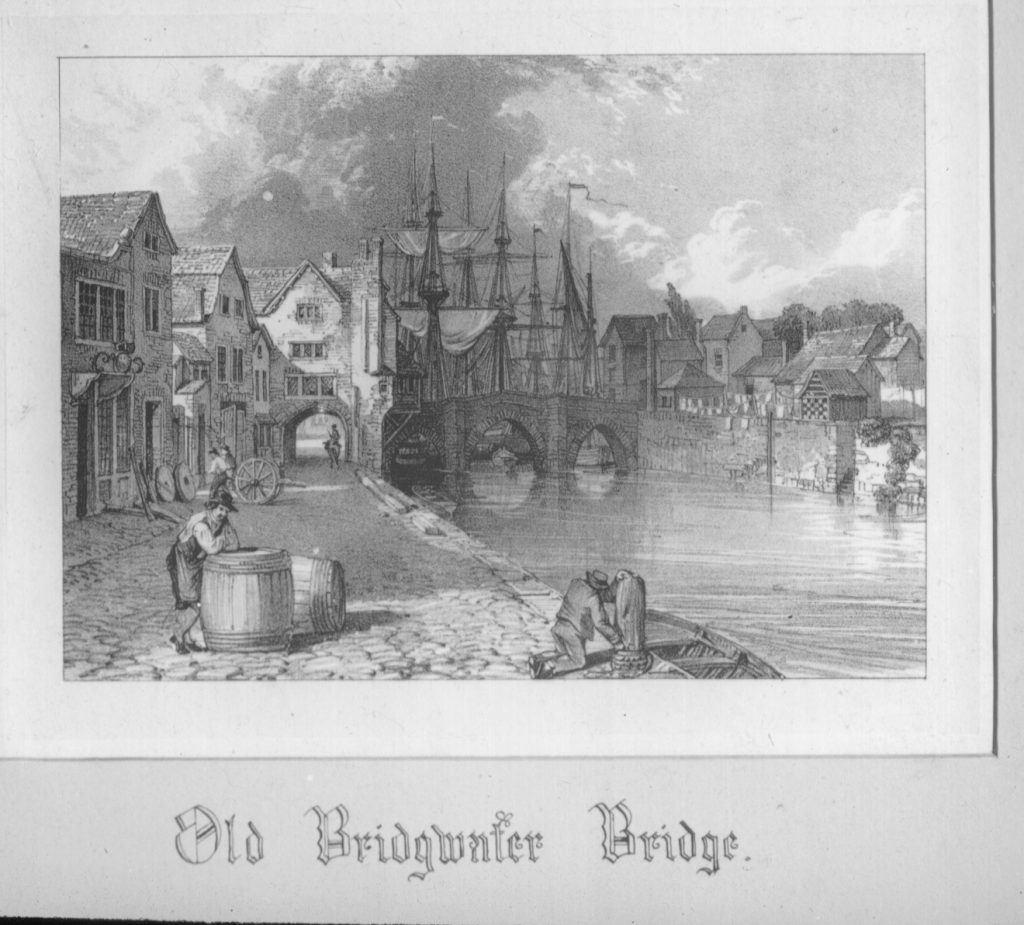
This is the first of three images made of the old medieval bridge, which was demolished in 1794 and replaced by an iron bridge. The picture was taken from Binford Place, and Chubb’s home was along the left. Of special note here is the ‘Arch’, part of the Castle Inn, which spanned the roadway at the junction of Binford and Fore Street. This was purchased by the Town Council in 1790 and demolished, its materials used to build the slipway from the bridge down to the riverbed. On the opposite side of the river can be seen a cluster of building hard against the bridge on both sides, a tall three storey building on the further north side, then a series of different sized buildings on the closer south side. These would be demolished in the 1830s and a second slipway added to that side of the river. The original watercolour this is based upon is in the collection of the Blake Museum, and is the cover image to J.F and J.C Lawrences’ A History of Bridgwater (2005).
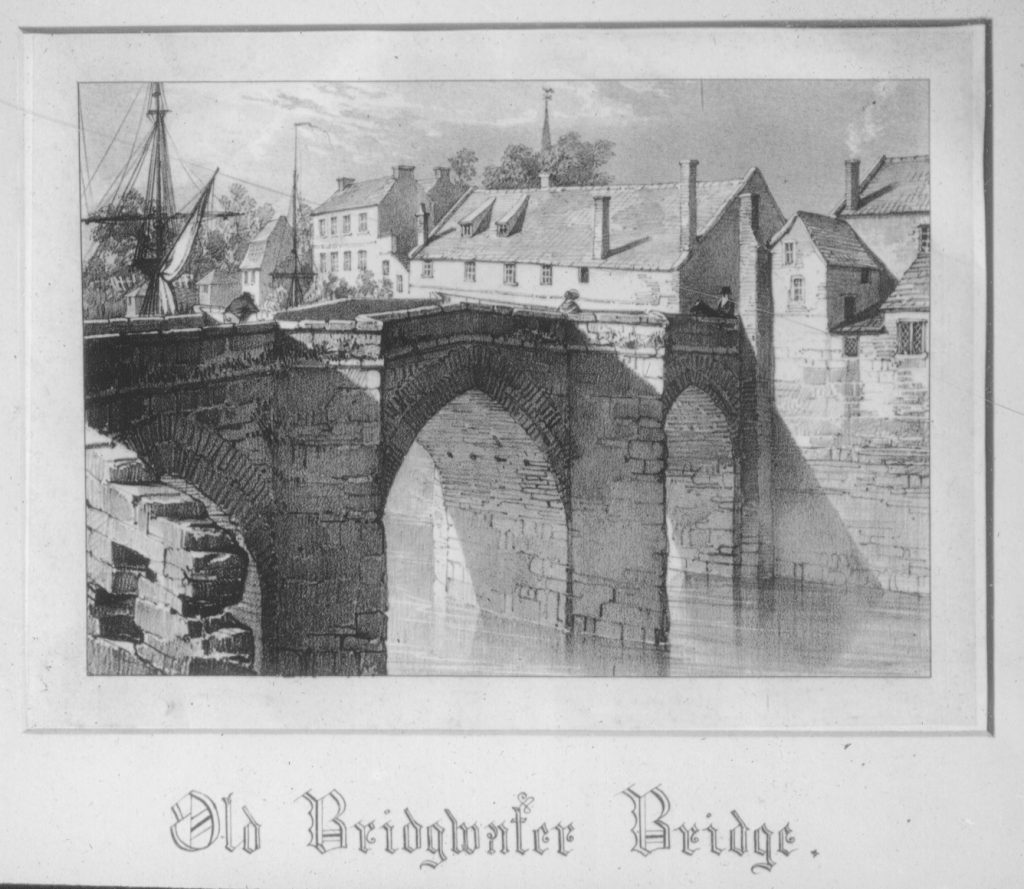
This shows the medieval bridge from a different angle, from the site of the demolished ‘arch’ mentioned above, looking towards Eastover. The mediator of Chubb’s original, probably John Chubb junior, has mistakenly added the spire of St Mary’s Church in the background, but this is certainly an error. By the time Chubb recorded this view, the three storey building on the north east corner of the bridge had also been demolished: this had been purchased and demolished by the Town Council in 1794 in advance of the bridge’s eventual demolition. The long building to the centre-left is now the site of 1 East Quay, and the modern building (York House) may incorporate parts of the one shown here. The grand Georgian House in the distance still stands today, number 4 East Quay.
The third Bridge image by Chubb is not in this set of slides, but can be seen here.
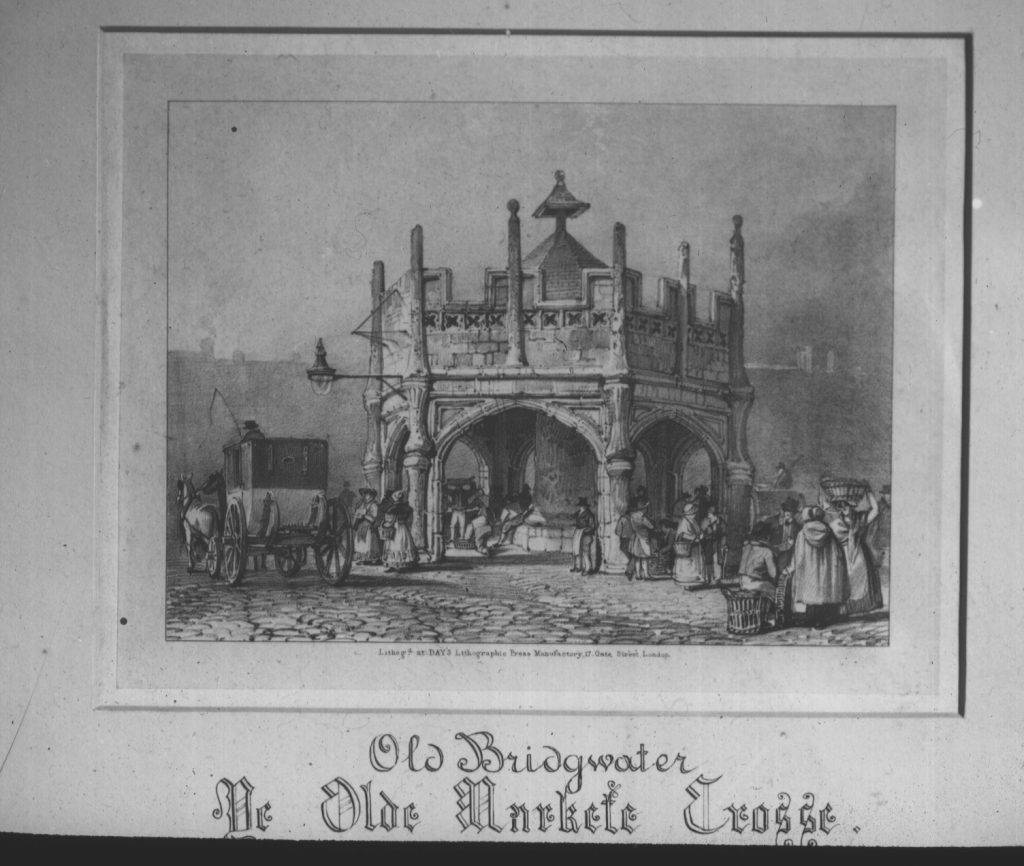
Note that ‘ye’ should be pronounced ‘the’ the ‘y’ standing in for a defunct letter (thorn), which was interchangeable with ‘th’.
The High Cross was located in front of Lloyd’s Bank, straddling the modern pavement and roadway. It was pulled down between 1791 and 1806. With a new market house project underway and the need for more road space for traffic, the covered market cross had become redundant. It is not clear from which direction this image was taken from. The Cross at the ends of its life was probably a far cry from its late medieval grandeur, as there was probably once a crown spire on the upper part. Somewhere on the cross was also engraved the advice ‘Mind your own Business’.
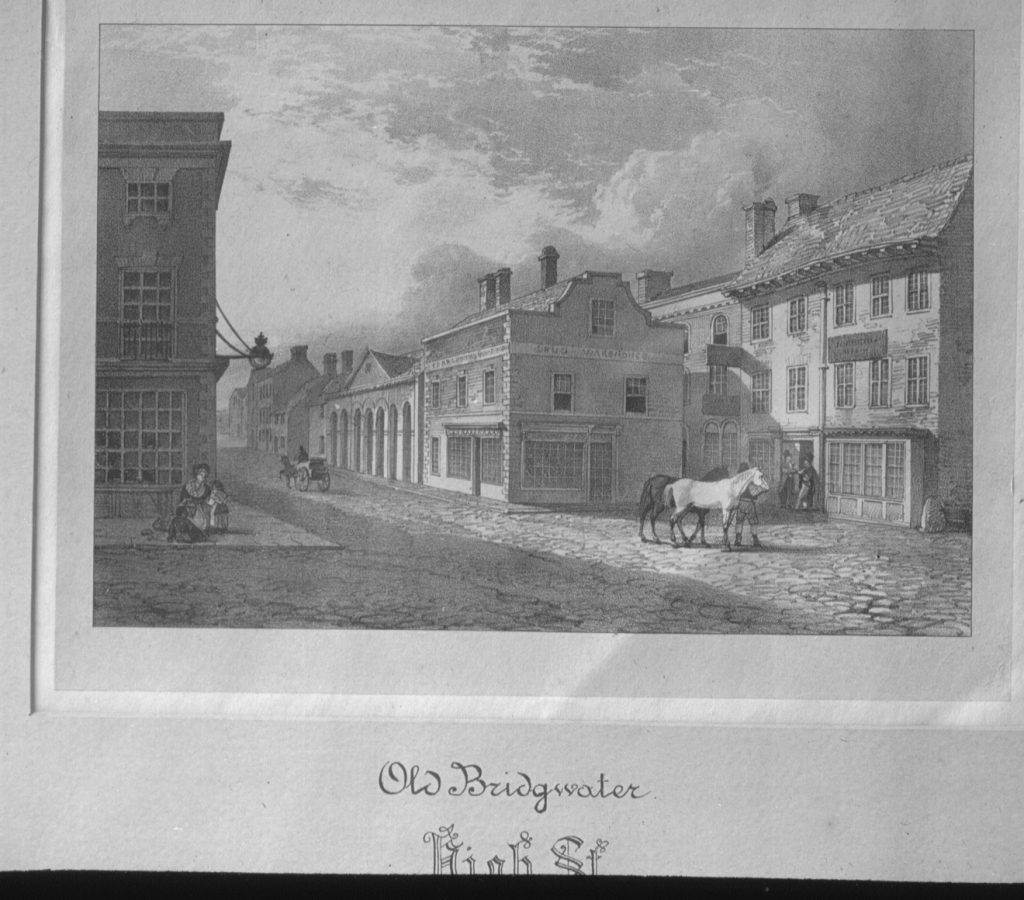
This image was taken from roughly the site of the High Cross on the Cornhill, looking up the High Street. This is one of the few lithographs for which the original watercolour survivies, now in the collection of the Blake Museum. It can be seen here.
The building on the left is now part of the Cornhill marketplace, and this may have been part of the original market house design. The watercolour shows a red building, perhaps not too dissimilar to Taunton’s Market House. The buildings on the right are the Angel Inn and the Crown Inn, which were later pulled down to create the Royal Clarence Hotel (now partly Specsavers). The row of buildings in the middle are now all gone, these were a row of shops running up the High Street as far as the Mansion House, known as the Island. The northside contained a series of butcher’s stalls, known as the Shambles. The long colonnaded building was apparently a fish market. The whole row was demolished by about 1840.
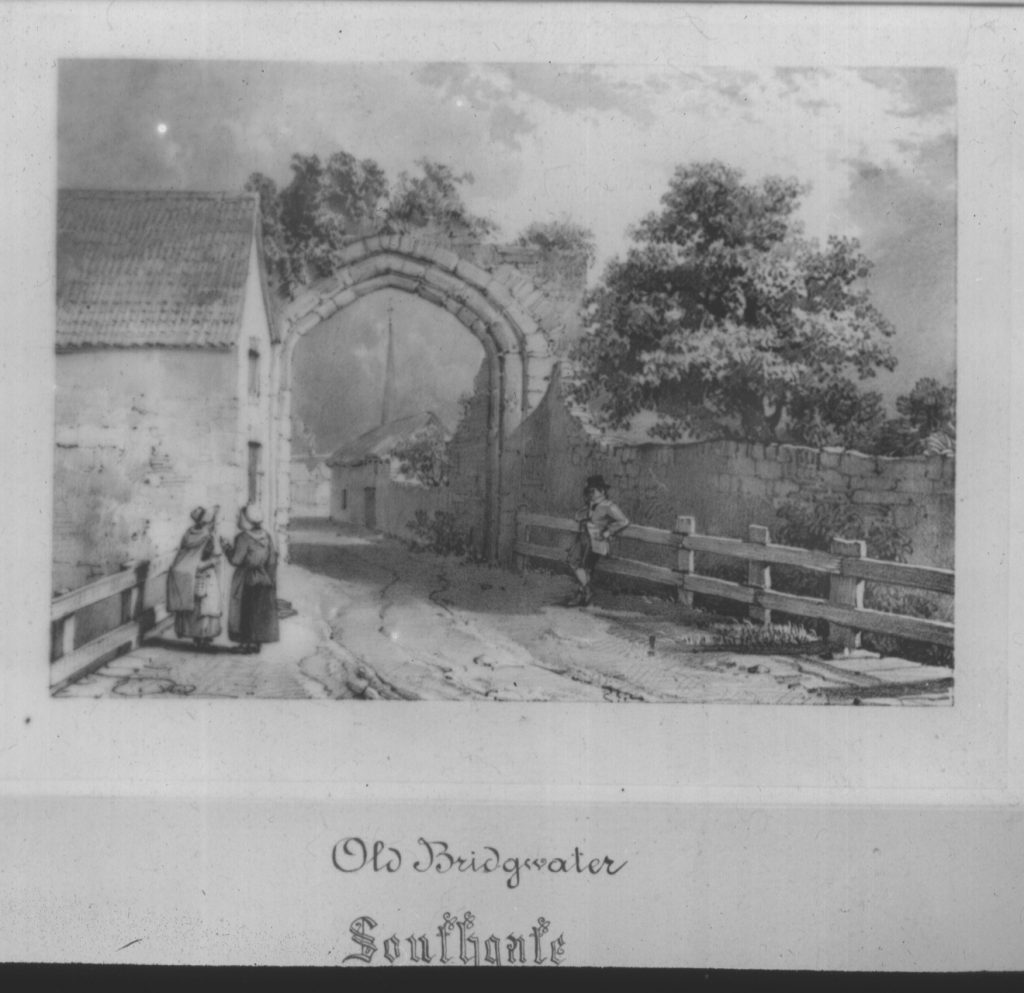
This is actually more likely to be the North Gate, as the little side street in the distance would be Market Street, or Prickett’s Lane as it was then. The majority of the gatehouse seems to have already been demolished by this time, and the fencing perhaps indicates a bridge over the Town Ditch, now outlined by Mount Street.
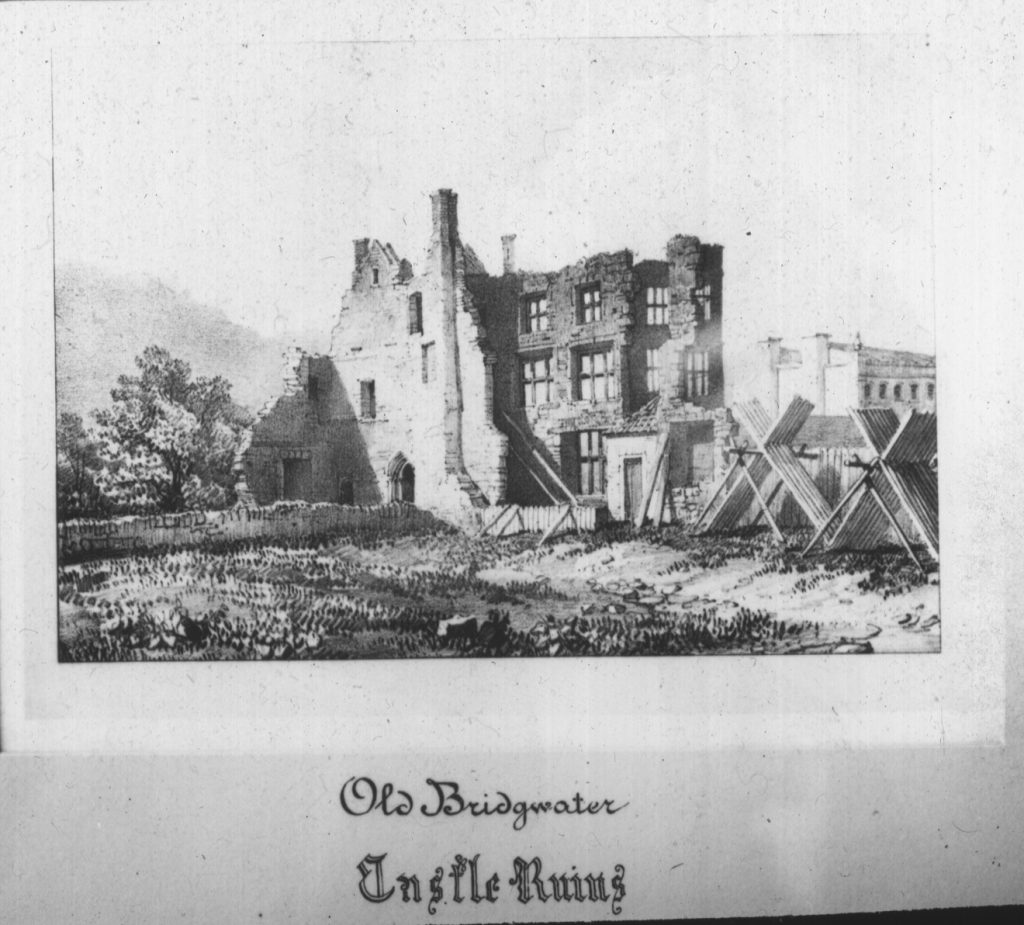
This is the second picture Chubb made of the crumbling ruins of the Castle House in what is now King Square. In the background can be seen Castle Street, which was built leading up to this once grand building. The earlier Chubb image shows the ruins of a huge turret, and the shadow of a second, from what was a ‘B’ shaped building. This had been a large internal gatehouse for the castle, dividing its two bailies, and had been converted into a manor house in the 1630s, hence the large windows seen here. The ruins were finally swept away in about 1813, when the east side of King Square was built. This image presumably pre-dates 1807, when the south side was built, otherwise Chubb would not have been able to get such a perspective.
The earlier image of the ruined castle can be seen here.
The Cornhill
This image was not among the lantern slides in this collection, but can be viewed here.
This view is taken from the top of Fore Street, looking towards St Mary’s Church. The closest building on the left no longer survives. The next one, with the distinctive upper central window does, however, and is currently the Cornhill Inn. At the time of Chubb’s picture, this was the Swan Inn. Next along is a building that would become the first Thompson’s Ironmongers, which does not survive. Three more buildings along this row are omitted here, which were probably out of perspective when this image was first painted by Chubb. Not much can be seen of the church in this view, although it is interesting to note the wall and railings – note there does not seem to be a gateway into the church on this side at this time. The most obvious feature of this picture is the glorious jettied timber-framed building, not too dissimilar to King John’s Hunting Lodge in Axbridge, which dates to about 1460. Chubb was no doubt recording this before its imminent demolition to make way for the new Market House, in about 1800. The building to the right of this is mostly obscured. In form, with its low-pitched gable it seems slightly similar to Hooper’s on High Street.
